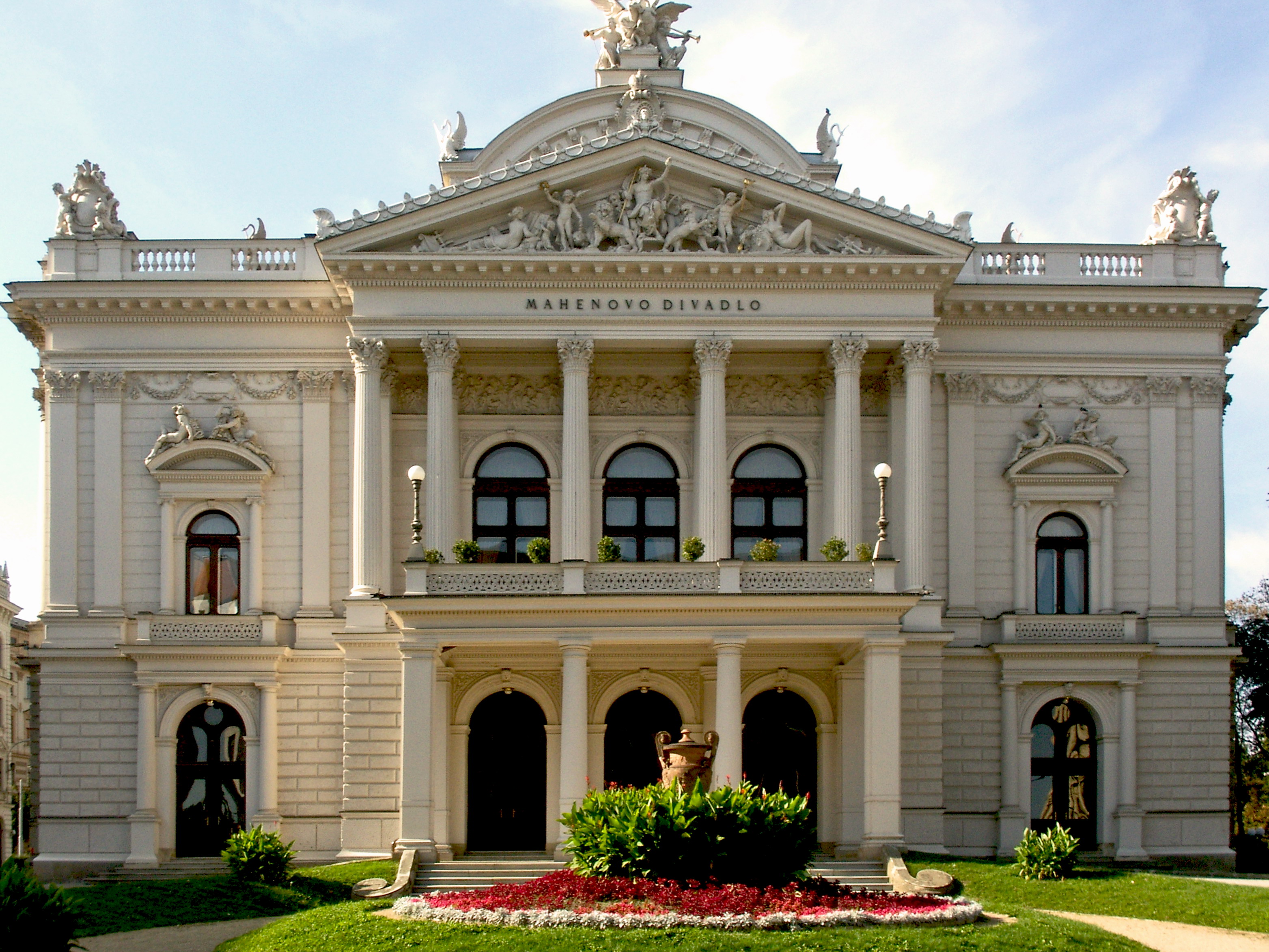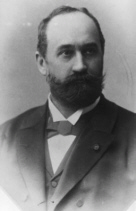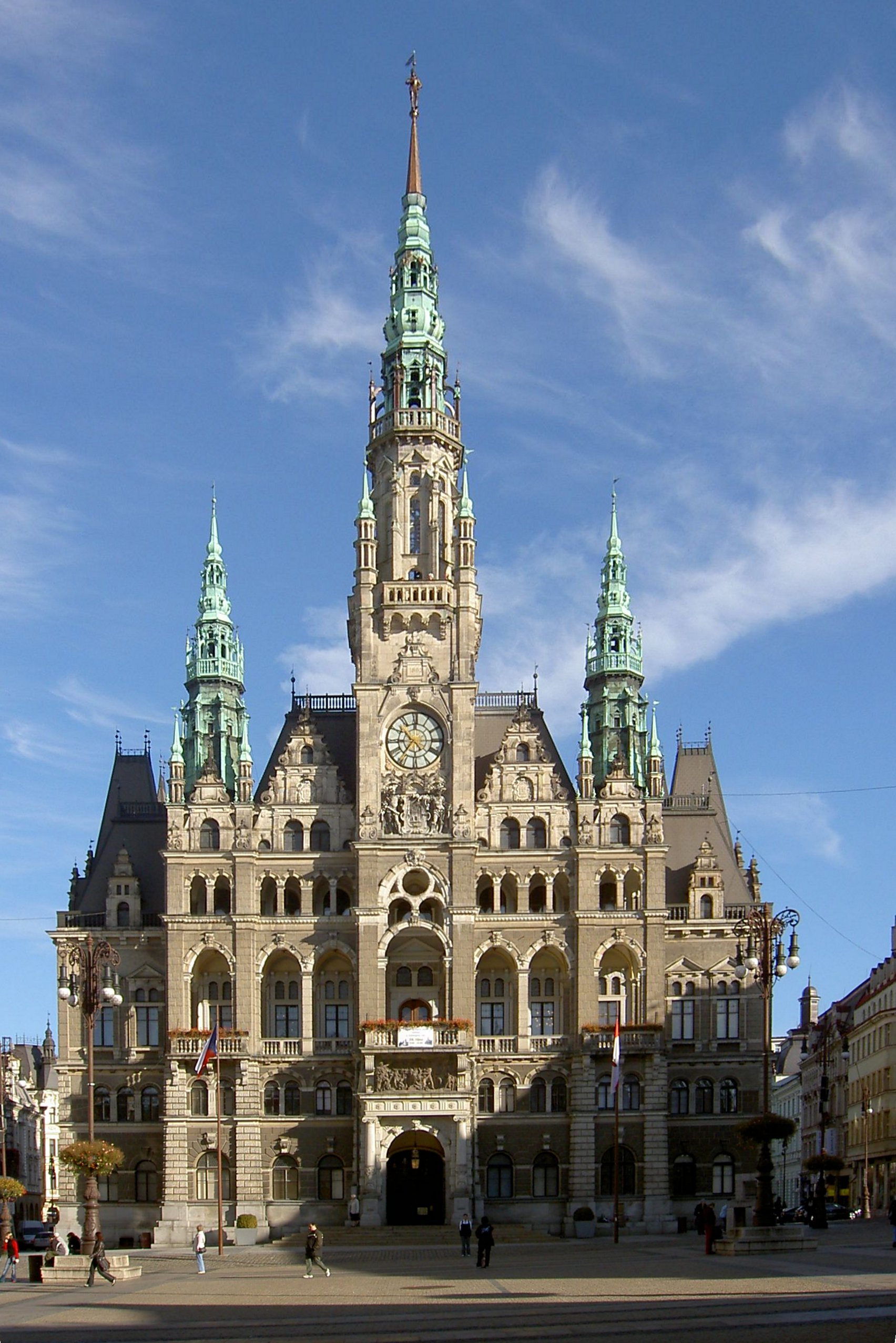|
Theodor Friedl
Theodor Friedl (February 13, 1842 in Vienna – September 5, 1900 in Warth, Lower Austria) was an Austrian sculptor. Biography Friedl studied at the Academy of Fine Arts Vienna under Anton Dominik Fernkorn. Among his first major commissions was a program of architectural sculpture for the 1877 Vienna Stock Exchange, a collaboration with the Danish-Austrian neo-classic architect Theophil Hansen. The program included a quadriga, six full-figure statues, and a series of frieze panels around the cornice line. The same year Friedl had also begun a long-term working relationship with Viennese architects Fellner & Helmer for theaters across Europe, transmitting variations of the Viennese neo-classic Ringstraße Style to Sofia, Brno, Berlin, etc. Friedl was buried with honors at the Zentralfriedhof Cemetery, with a portrait relief on his tomb by sculptor Leopold Kosig. Work Friedl's major work includes: * Vienna Stock Exchange, for architect Theophil Hansen, 1877 * two fin ... [...More Info...] [...Related Items...] OR: [Wikipedia] [Google] [Baidu] |
Börse Wien 04
Börse may refer to: Stock exchanges * Deutsche Börse *Wiener Börse *Berliner Börse *Börse München *Börse Stuttgart *Frankfurt Stock Exchange Other *The Stock Exchange (book) (Die Börse) See also * Bourse (other) *List of European stock exchanges In the European region, there are multiple stock exchanges among which five are considered major (as having a market cap of over US$1 trillion): *Euronext, which is a pan-European, Dutch-domiciled and France-headquartered stock exchange compo ... * Eurex {{disambig ... [...More Info...] [...Related Items...] OR: [Wikipedia] [Google] [Baidu] |
Mahen Theatre
Mahen Theatre ( cs, Mahenovo divadlo) is a Czech Republic, Czech theatre situated in the city of Brno. Mahen Theatre, built as German ''Deutsches Stadttheater'' in 1882, was one of the first public buildings in the world lit entirely by electric light.#Ort, Ort (2007), p. 82 It was built in a combination of Neo-renaissance, Baroque Revival architecture, Neo-baroque and Neoclassical architecture, Neoclassical architectural styles. History The city theatre ''Reduta Theatre, Reduta'' in Brno burned down in 1870, and the city council decided to build a new theatre building within a short time period. Thanks to the efforts of then mayor Gustav Winterholler, the decision was taken to build a bigger and better theatre at the place of ''Obstplatz'' (today's ''Malinovský square'').#Ort, Ort (2007), p. 38 The commission was assigned to the renowned Vienna architectural studio Ferdinand Fellner, Fellner and Helmer. The studio was specialized in projects of theatre buildings. Around 1880, the ... [...More Info...] [...Related Items...] OR: [Wikipedia] [Google] [Baidu] |
Sculptors From Vienna
Sculpture is the branch of the visual arts that operates in three dimensions. Sculpture is the three-dimensional art work which is physically presented in the dimensions of height, width and depth. It is one of the plastic arts. Durable sculptural processes originally used carving (the removal of material) and modelling (the addition of material, as clay), in stone, metal, ceramic art, ceramics, wood and other materials but, since Modernism, there has been an almost complete freedom of materials and process. A wide variety of materials may be worked by removal such as carving, assembled by welding or modelling, or Molding (process), moulded or Casting, cast. Sculpture in stone survives far better than works of art in perishable materials, and often represents the majority of the surviving works (other than pottery) from ancient cultures, though conversely traditions of sculpture in wood may have vanished almost entirely. However, most ancient sculpture was brightly painted, ... [...More Info...] [...Related Items...] OR: [Wikipedia] [Google] [Baidu] |
1900 Deaths
Nineteen or 19 may refer to: * 19 (number), the natural number following 18 and preceding 20 * one of the years 19 BC, AD 19, 1919, 2019 Films * ''19'' (film), a 2001 Japanese film * ''Nineteen'' (film), a 1987 science fiction film Music * 19 (band), a Japanese pop music duo Albums * ''19'' (Adele album), 2008 * ''19'', a 2003 album by Alsou * ''19'', a 2006 album by Evan Yo * ''19'', a 2018 album by MHD * ''19'', one half of the double album ''63/19'' by Kool A.D. * ''Number Nineteen'', a 1971 album by American jazz pianist Mal Waldron * ''XIX'' (EP), a 2019 EP by 1the9 Songs * "19" (song), a 1985 song by British musician Paul Hardcastle. * "Nineteen", a song by Bad4Good from the 1992 album '' Refugee'' * "Nineteen", a song by Karma to Burn from the 2001 album ''Almost Heathen''. * "Nineteen" (song), a 2007 song by American singer Billy Ray Cyrus. * "Nineteen", a song by Tegan and Sara from the 2007 album '' The Con''. * "XIX" (song), a 2014 song by Slipk ... [...More Info...] [...Related Items...] OR: [Wikipedia] [Google] [Baidu] |
1842 Births
__NOTOC__ Year 184 ( CLXXXIV) was a leap year starting on Wednesday (link will display the full calendar) of the Julian calendar. At the time, it was known as the Year of the Consulship of Eggius and Aelianus (or, less frequently, year 937 ''Ab urbe condita''). The denomination 184 for this year has been used since the early medieval period, when the Anno Domini calendar era became the prevalent method in Europe for naming years. Events By place China * The Yellow Turban Rebellion and Liang Province Rebellion break out in China. * The Disasters of the Partisan Prohibitions ends. * Zhang Jue leads the peasant revolt against Emperor Ling of Han of the Eastern Han Dynasty. Heading for the capital of Luoyang, his massive and undisciplined army (360,000 men), burns and destroys government offices and outposts. * June – Ling of Han places his brother-in-law, He Jin, in command of the imperial army and sends them to attack the Yellow Turban rebels. * Winter – Zha ... [...More Info...] [...Related Items...] OR: [Wikipedia] [Google] [Baidu] |
Österreichisches Biographisches Lexikon 1815–1950
The ''Österreichisches Biographisches Lexikon 1815–1950'' (''ÖBL''), ''Austrian Biographical Lexicon 1815-1950'', is a dictionary of biographical entries for individuals who have contributed to the history of Austria, published by the Austrian Academy of Sciences. It currently comprises 12 volumes (60 deliveries) with a total of more than 16,000 biographies. It follows the ''Biographisches Lexikon des Kaiserthums Oesterreich ''Biographisches Lexikon des Kaiserthums Oesterreich'' (English, ''Biographical Encyclopedia of the Austrian Empire'') (abbreviated ''Wurzbach'' from the author's surname) is a 60-volume work, edited and published by Constantin von Wurzbach, cont ...'' (''Biographical Encyclopedia of the Austrian Empire''), which dealt with the period between 1750 and 1850 and which was published from 1856 to 1891 in 60 volumes, containing 24,254 critical biographies. Published volumes *Volume 1 (''Aarau Friedrich–Gläser Franz''), 1957 (reprinted without changes 1 ... [...More Info...] [...Related Items...] OR: [Wikipedia] [Google] [Baidu] |
Palais Lanckoroński
The ''Palais Lanckoroński'' was a palace in Vienna, Austria, located at Jacquingasse 16-18, in the Landstraße District. It was constructed in 1894-95 for Count Karol Lanckoroński and his family as a personal residence, and it housed the count's enormous art collection. The palace was built in a neo-baroque style by the theatre architects Ferdinand Fellner and Hermann Helmer. The building was three stories high, set back from the street, and protected by a wall with double gates. The entrance hall was wood panelled, two stories high, and decorated with portraits of the family. Other festive halls were decorated with frescoes and luxurious gobelin tapestries from the 17th century. Precious paintings, furniture and sculpture from different eras were arranged to form themed ensembles in the various rooms, with the rooms named to reflect the collection housed within. The palace was severely damaged in World War II, and was torn down in the 1960s. History The noble Lanckorońs ... [...More Info...] [...Related Items...] OR: [Wikipedia] [Google] [Baidu] |
Franz Neumann (architect)
Franz Ritter von Neumann the Younger (January 16, 1844, Vienna – February 1, 1905, Vienna) was an Austrian architect. Biography Neumann came from a family of notable architects: his father Franz Neumann (1815–1888) and his brother Gustav von Neumann (1856–1928) were both well known in Vienna. He began his career as an apprentice to Eduard van der Nüll and August Sicard von Sicardsburg, then joined the staff of Friedrich von Schmidt. Neumann's major work includes (in Vienna unless otherwise noted): * Kuffner Observatory, 1886 * Liebenberg Memorial, 1887 * Habsburgwarte, 1889 * Liberec Town Hall, Liberec (Reichenberg), 1893 * Frýdlant Town Hall, 1893 * St. Leopold's Church, Donaufeld Saint Leopold's Church (german: Kirche zum Heiligen Leopold, "Donaufelder Kirche") is the Roman Catholic parish church of Donaufeld in Floridsdorf, the 21st district of Vienna, Austria. Located at Kinzerplatz, it stands at a height of 96 m (315& ..., 1914 file:Liberec Town Hall 2003.jpg ... [...More Info...] [...Related Items...] OR: [Wikipedia] [Google] [Baidu] |
Czech Republic
The Czech Republic, or simply Czechia, is a landlocked country in Central Europe. Historically known as Bohemia, it is bordered by Austria to the south, Germany to the west, Poland to the northeast, and Slovakia to the southeast. The Czech Republic has a hilly landscape that covers an area of with a mostly temperate continental and oceanic climate. The capital and largest city is Prague; other major cities and urban areas include Brno, Ostrava, Plzeň and Liberec. The Duchy of Bohemia was founded in the late 9th century under Great Moravia. It was formally recognized as an Imperial State of the Holy Roman Empire in 1002 and became a kingdom in 1198. Following the Battle of Mohács in 1526, the whole Crown of Bohemia was gradually integrated into the Habsburg monarchy. The Protestant Bohemian Revolt led to the Thirty Years' War. After the Battle of White Mountain, the Habsburgs consolidated their rule. With the dissolution of the Holy Empire in 1806, the Cro ... [...More Info...] [...Related Items...] OR: [Wikipedia] [Google] [Baidu] |
Liberec
Liberec (; german: Reichenberg ) is a city in the Czech Republic. It has about 103,000 inhabitants and it is the fifth-largest city in the country. It lies on the Lusatian Neisse, in a basin surrounded by mountains. The city centre is well preserved and is protected by law as an urban monument zone. Liberec was once home to a thriving textile industry and hence nicknamed the "Manchester of Bohemia". For many Czechs, Liberec is mostly associated with the city's dominant Ještěd Tower. Since the end of the 19th century, the city has been a conurbation with the suburb of Vratislavice nad Nisou and the neighbouring city of Jablonec nad Nisou. Therefore, the total area with suburbs encompasses 150,000 inhabitants. Administrative parts Liberec is made up of 32 city parts and one self-governing borough (Vratislavice nad Nisou). *Liberec I-Staré Město *Liberec II-Nové Město *Liberec III-Jeřáb *Liberec IV-Perštýn *Liberec V-Kristiánov *Liberec VI-Rochlice *Liberec VII-Horní ... [...More Info...] [...Related Items...] OR: [Wikipedia] [Google] [Baidu] |
Liberec Town Hall
Liberec Town Hall is a large building in the town of Liberec, Czech Republic. Liberec town hall is a Neo-Renaissance building, which was built from 1888 till 1893 by design of the Viennese architect, Franz Neumann, replacing earlier structures dating to 1602. The building has a richly decorated façade, integrated artwork, and very rare stained glass Stained glass is coloured glass as a material or works created from it. Throughout its thousand-year history, the term has been applied almost exclusively to the windows of churches and other significant religious buildings. Although tradition ... windows. Above the entrance portal is a sculptural relief by Viennese sculptor Theodor Friedl, showing the establishment of the old and new town hall. At its center is a female figure symbolizing the city; on the left side, figures associated with the original town hall, and figures associated with the emergence of a new town hall on the right, including the architect Neumann. T ... [...More Info...] [...Related Items...] OR: [Wikipedia] [Google] [Baidu] |
Maria-Theresien-Platz
Maria-Theresien-Platz is a large public square in Vienna, Austria, that joins the Ringstraße with the Museumsquartier, a museum of modern arts located in the former Imperial Stables. Facing each other from the sides of the square are two near identical buildings, the Naturhistorisches Museum (Natural History Museum) and the Kunsthistorisches Museum (Art History Museum).Brook 2012, p. 126–27. The buildings are near identical, except for the statuary on their façades. The Naturhistorisches' façade has statues depicting personifications of Africa, Asia, Europe, and the Americas. The Kunsthistorisches façade features famous European artists, such as the Dutch Bruegel, among others. The Naturhistorisches Museum and the Kunsthistorisches Museum and the square adjoining them were built in 1889. At the center of the square stands the Maria-Theresia Memorial, a large statue depicting Empress Maria Theresa, namesake of the square. The Modern Art Museum in the former Imperial Stables ... [...More Info...] [...Related Items...] OR: [Wikipedia] [Google] [Baidu] |






